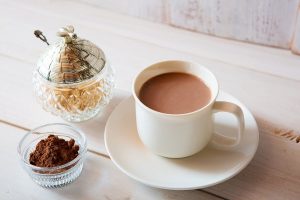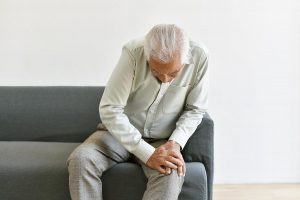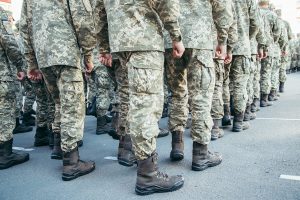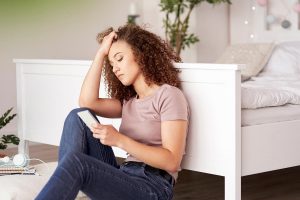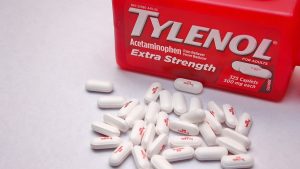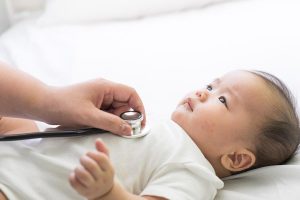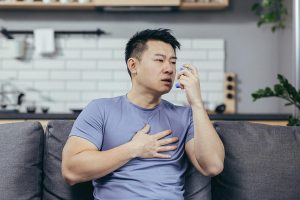The Trump Administration is expected to announce guidelines that will recommend many Americans wear face masks when out in public, to curb transmission of the novel coronavirus.
The recommendation will apply to those living in hard-hit areas only, and it is not mandatory, the Associated Press reported.
Experts say there’s emerging — but still inconclusive — evidence that such a practice might help “flatten the curve” of COVID-19’s spread.
On Thursday, President Donald Trump announced that his administration was “coming out with regulations” on mask use, but no one will force individuals to do so.
“If people want to wear them, they can,” he said.
To save scarce N95 masks and surgical masks for front-line health care workers, many experts believe that cheaper versions or do-it-yourself cloth masks might be a good alternative for everyday use. Trump has said that even scarves wrapped over the mouth and nose might work.
Thursday’s announcement from the White House runs counter to COVID-19 public health guidelines in place over the past two months. Those guidelines opposed healthy folks wearing face masks in public.
That was due to concerns that cloth masks might increase a persons’s risk of infection if not worn properly or washed regularly, explained Dr. Luis Ostrosky, an infectious disease specialist with Memorial Hermann-Texas Medical Center in Houston.
“We know the virus can live on surfaces up to three days. The more porous and moist the surface, the longer it can live there,” Ostrosky said. “We don’t like cloth masks because they tend to get very moist and pull germs in, not only virus, but bacteria.”
Officials also didn’t want people to use surgical masks or respirators, given that hospitals face critically short supplies of these valuable protective devices.
But recently, U.S. Surgeon General Dr. Jerome Adams has asked the U.S. Centers for Disease Control and Prevention to investigate whether this recommendation should change, based on the spread of COVID-19 by people who have not developed any symptoms.
Although there’s not a lot of scientific evidence, there’s a growing consensus that DIY cloth masks might help protect people in crowded or poorly ventilated areas such as subways, elevators or grocery stores, said Ravina Kullar, an infectious diseases researcher with Expert Stewardship Inc. in Newport Beach, Calif.
“It goes both ways. It’s to protect other people if you’re asymptomatic, and it’s to protect yourself if someone is out there coughing and their droplet falls on you,” Kullar said.
People who are in high-risk groups — the elderly, immunocompromised or chronically ill — also might want to wear a DIY cloth mask for added protection, Kullar said.
The COVID-19 coronavirus is probably three times as infectious as the flu, CDC Director Dr. Robert Redfield noted in a Monday interview with an NPR station in Atlanta. He believes that some infected people are likely transmitting the virus as many as two days before showing symptoms.
Further, there’s a possibility that the novel coronavirus could be spread by simple conversation or breathing, and not just by sneezing or coughing, according to a letter issued Wednesday by the U.S. National Academies of Science.
Still, the evidence on that is far from solid.
“It’s unclear if aerosolized droplets from casual conversation or simply breathing — from even 6 feet away — could place others at risk of contracting COVID-19,” said Dr. Robert Glatter, emergency physician at Lenox Hill Hospital in New York City. However, he said, “since we can’t definitively exclude this possibility, wearing a face covering might be advisable at this time.
“That said, we should reserve surgical face masks for health care workers on the front lines of this crisis,” Glatter continued.
Kullar urges people to donate any store-bought surgical face masks or respirators to local hospitals in desperate need.
And, most importantly, folks who choose to wear a DIY mask must not let lapse other healthy habits that protect against infection, Kullar added.
Even with the mask, you should still practice social distancing, regularly wash your hands, and avoid touching your face, Kullar said.
“In the beginning, my stance was, I don’t think it’s a good idea because I fear that social distancing will lapse and then people will start touching their face more because it gives a false sense of security,” Kullar said. “They think they’re protected with this mask, and they don’t need to physically distance themselves anymore, and that’s not true.”
For its part, the World Health Organization is standing by its recommendation that people not wear face masks unless they are sick with COVID-19 for precisely that reason.
“There is no specific evidence to suggest that the wearing of masks by the mass population has any potential benefit,” Dr. Mike Ryan, executive director of the WHO health emergencies program, said at a media briefing in Geneva on Monday. “In fact, there’s some evidence to suggest the opposite in the misuse of wearing a mask properly or fitting it properly.”
Individual countries haven’t toed this line. For example, Japan has announced that it plans to provide two washable face masks to 50 million households.
The best-performing DIY face mask design involves two layers of high-quality heavyweight “quilter’s cotton” with a thread count of 180 or more, according to a new study by Wake Forest Baptist Health.
Other cloth with an especially tight weave and thicker thread like batiks also do well, as does a double-layer mask with a simple cotton outer later and an inner layer of flannel, the Wake Forest researchers said.
Single-layer masks or double-layer designs using low-quality lightweight cotton do not work as well to filter airborne particles, the researchers said.
People who choose to wear a mask should refrain from touching it while worn, particularly with hands that haven’t been washed, Ostrosky said.
They should wash the mask after each use, and refrain from either placing it on surfaces that might not be clean or in a storage bag or container that could be contaminated, Ostrosky said.
“There’s no clear evidence that may be guiding the discussion,” Ostrosky said. “It’s really a personal choice. If you’re going to do it, it should be done correctly or it could be detrimental to your health.”
Also keep in mind you don’t need to wear the mask when you’re out at a park or walking through your neighborhood, as long as you’re practicing social distancing.
“The risk of transmission from simple breathing or conversation is much less of an issue outside in the environment with more efficient circulation from wind currents,” Glatter said. “It’s more of a concern in poorly ventilated or closed spaces indoors.”
More information
The University of Minnesota has more about DIY face masks.
Source: HealthDay
Copyright © 2025 HealthDay. All rights reserved.










